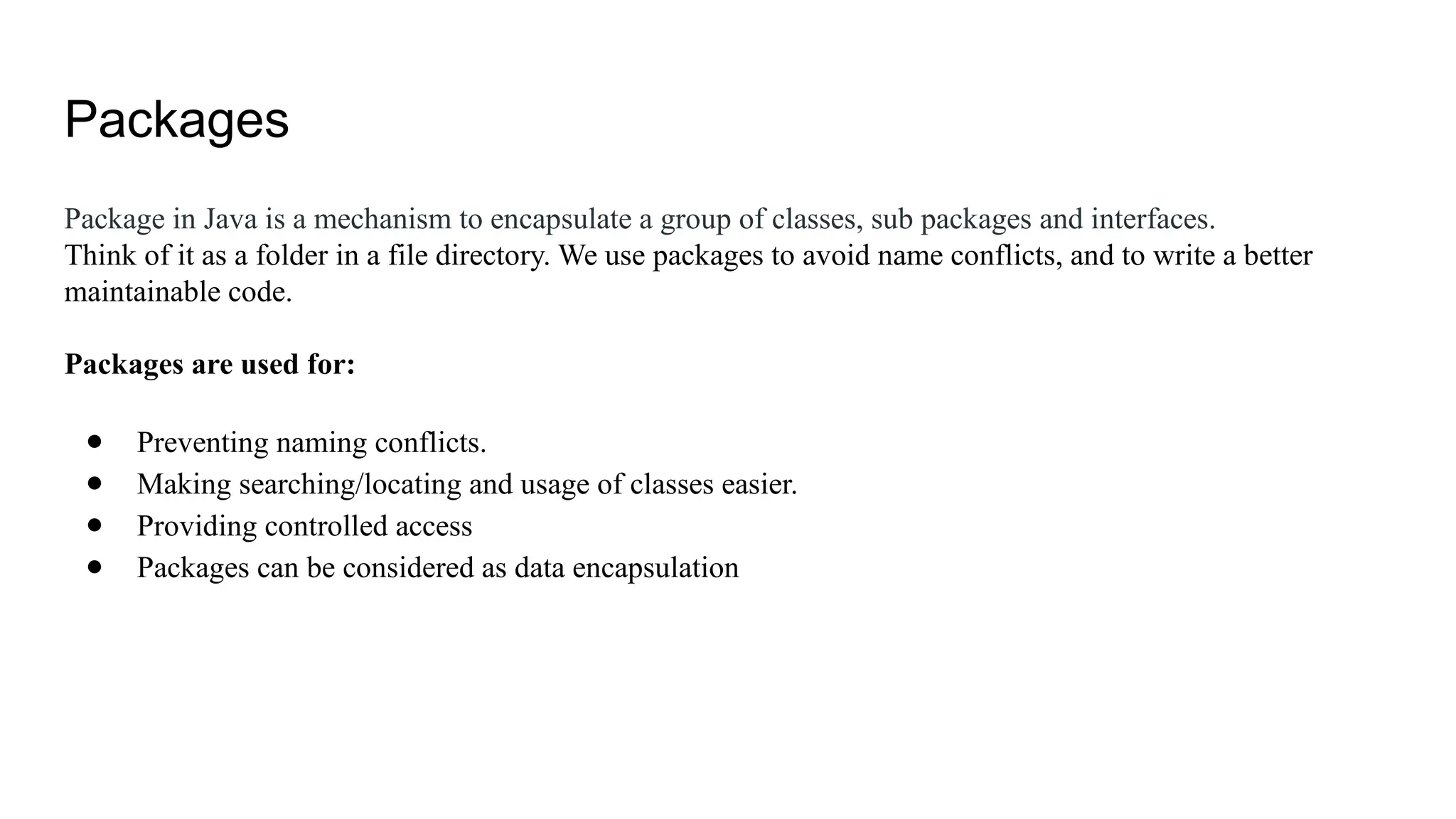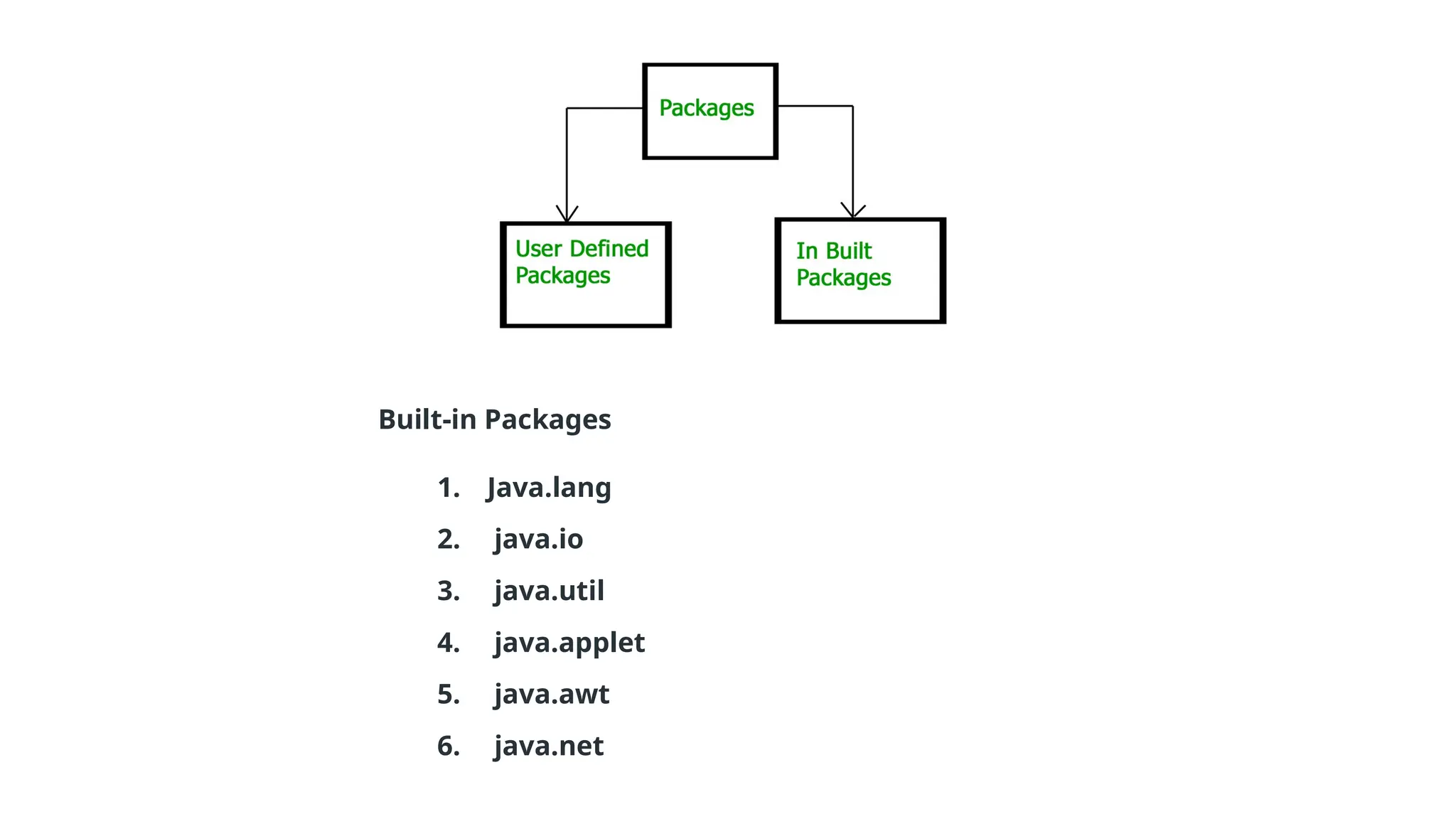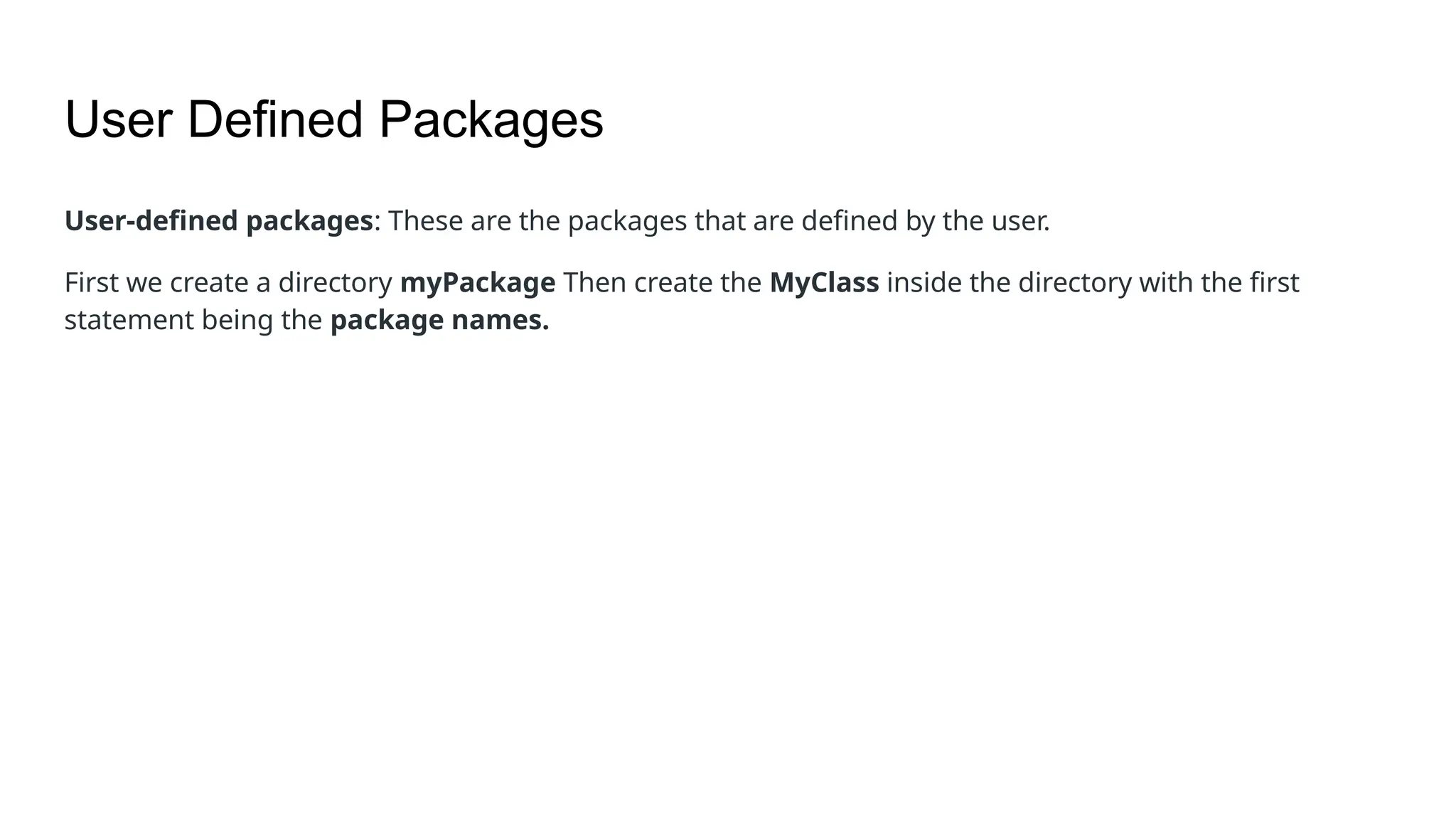The document discusses key concepts of inheritance in Java, which allows classes to inherit properties and methods from other classes, facilitating code reusability. It outlines various types of inheritance such as single, multilevel, hierarchical, and the limitations regarding multiple inheritance in classes, which can be achieved through interfaces instead. Additionally, it explains method overriding, abstraction, the super keyword, and the use of packages for encapsulation and organization of classes.
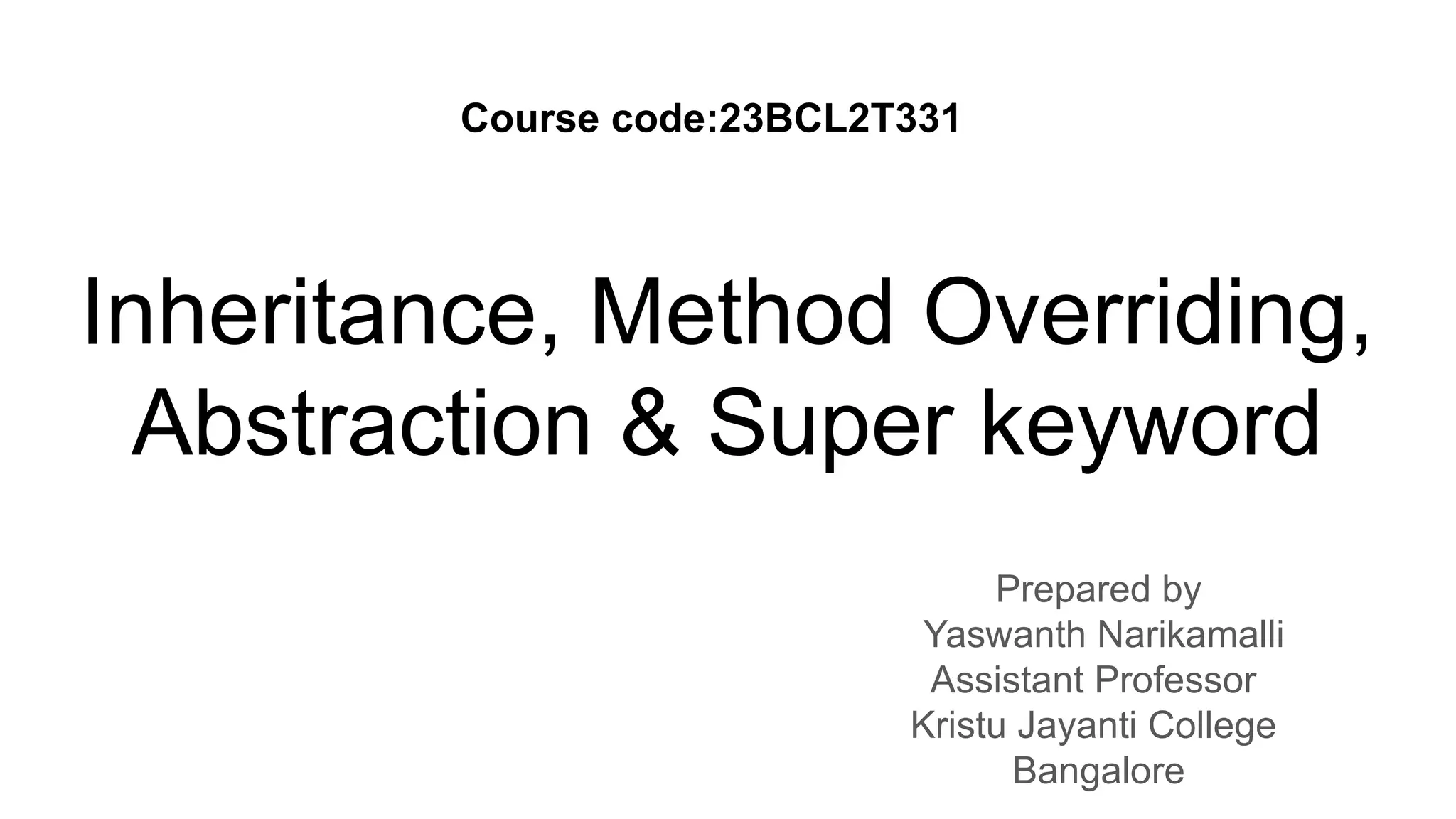
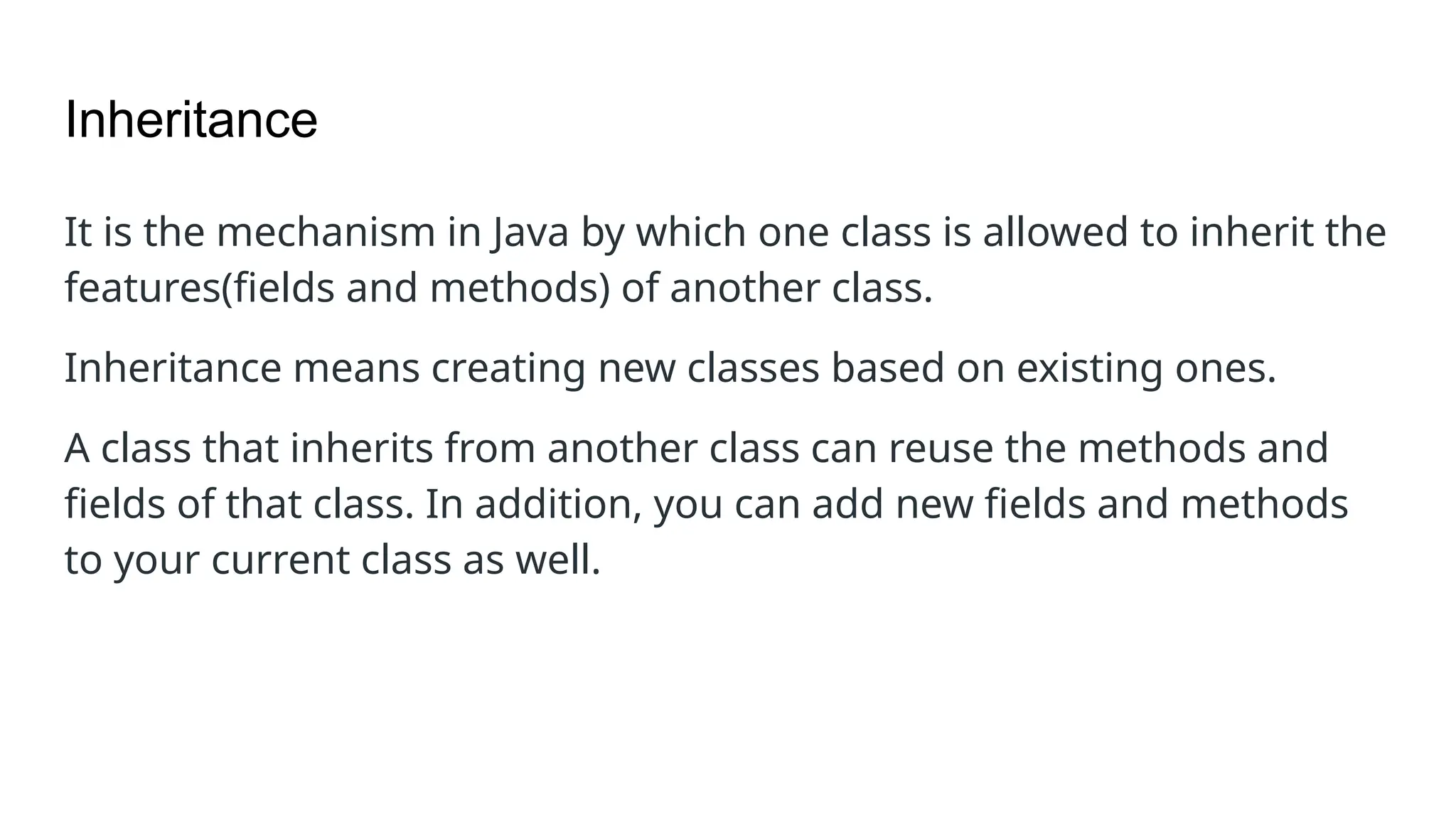
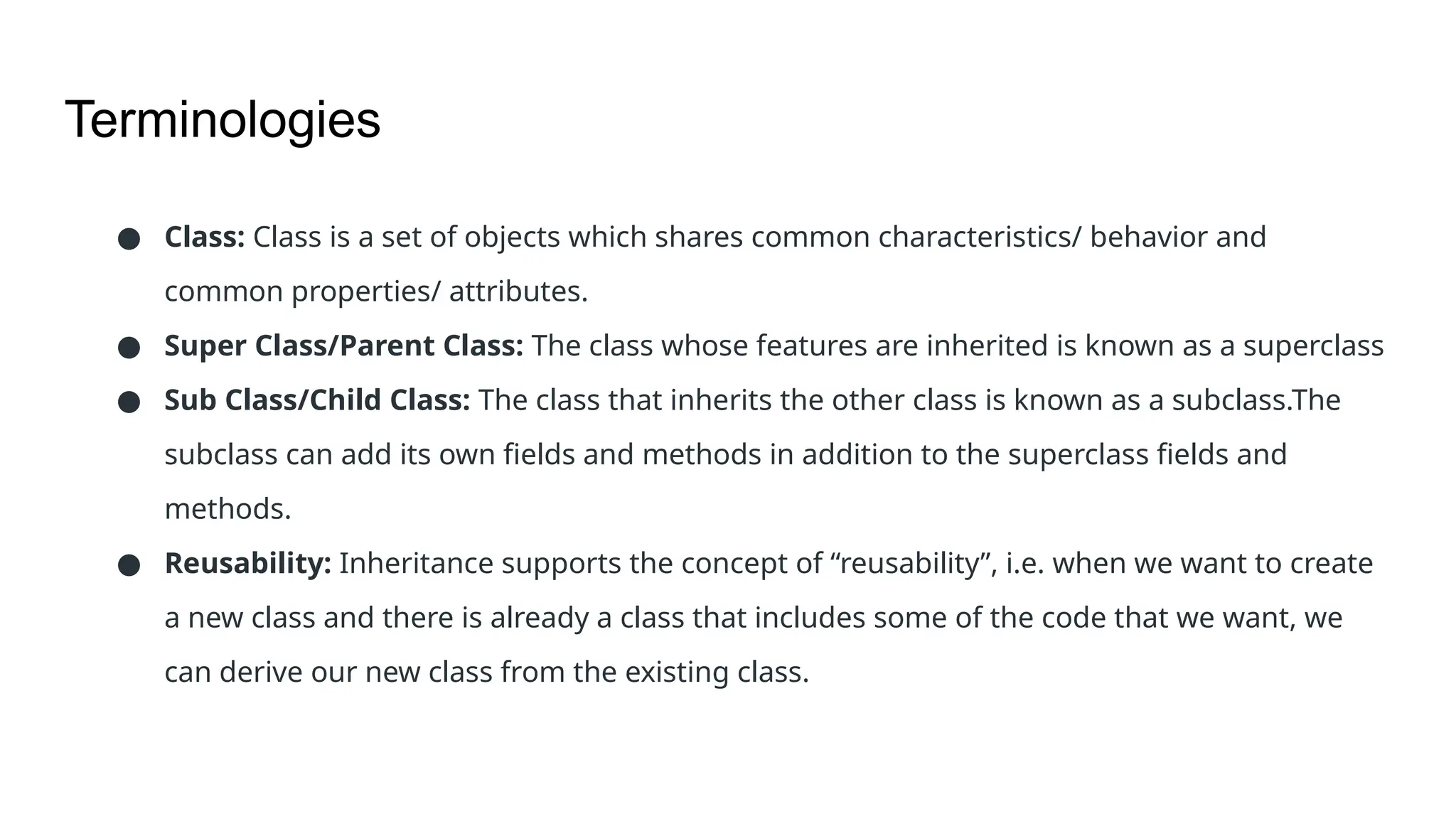
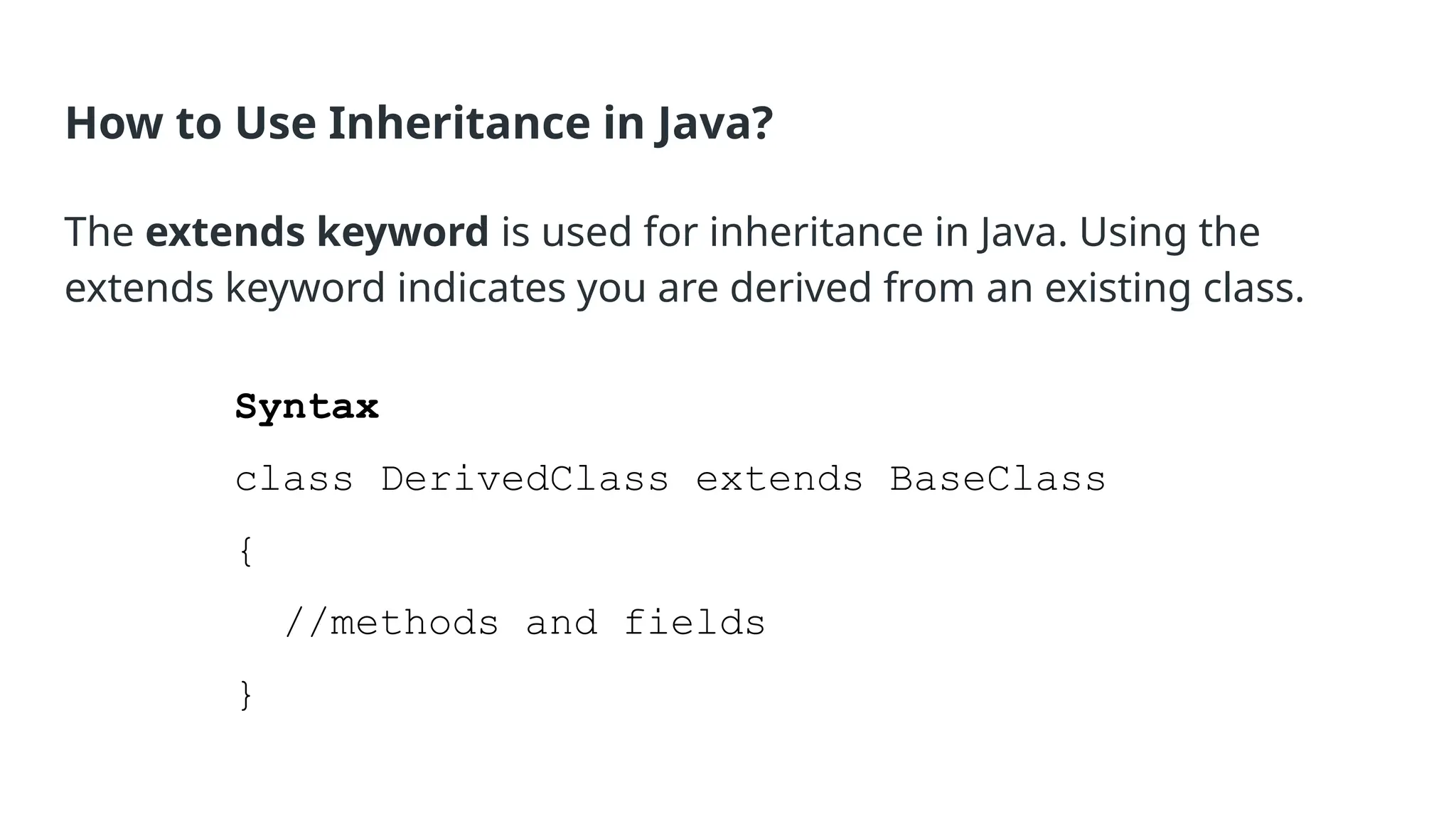
![Example import java.io.*; class Employee { int salary = 60000; } class Engineer extends Employee { int benefits = 10000; } class Worker{ public static void main(String args[]) { Engineer E1 = new Engineer(); System.out.println("Salary : " + E1.salary + "nBenefits : " + E1.benefits); } }](https://image.slidesharecdn.com/inheritanceinterface1-241129083629-0a785ae8/75/Inheritance-interface-ppt-Inheritance-5-2048.jpg)
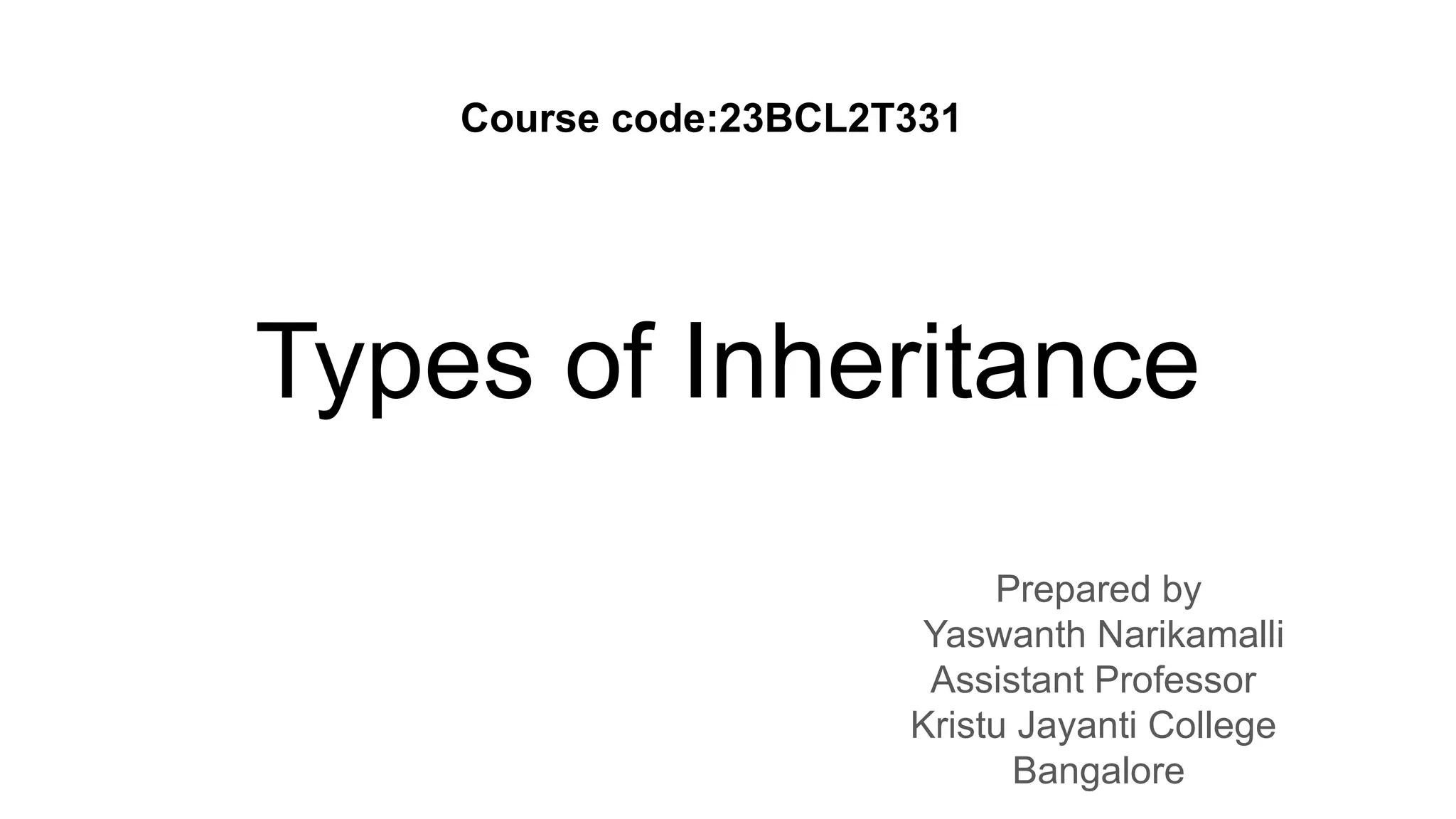

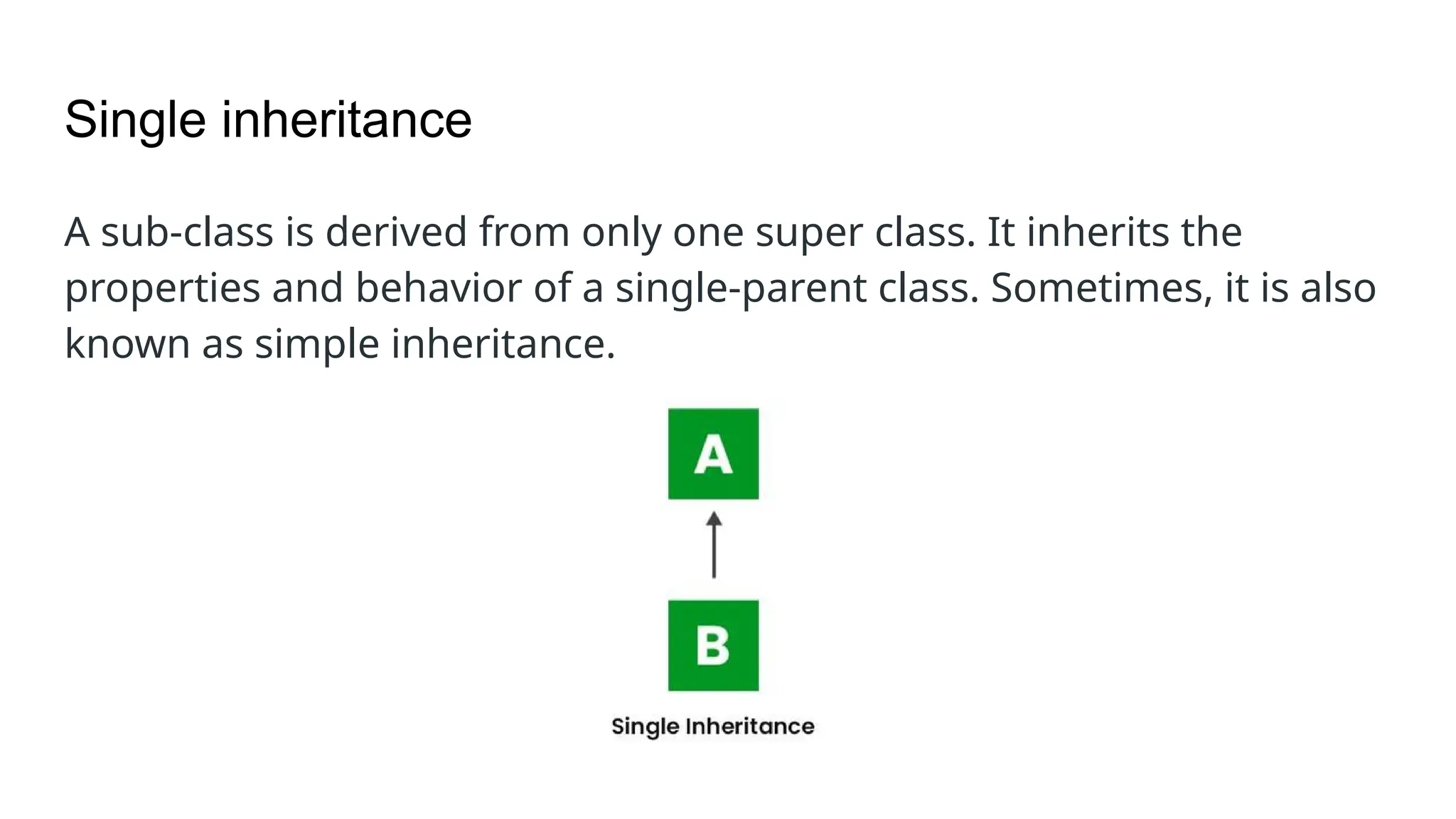
![// concept of single inheritance import java.io.*; import java.lang.*; import java.util.*; class One { public void print_class() { System.out.println("BCA cloud computing"); } } class Two extends One { public void print_sec(){ System.out.println("Section B"); } } public class Main { public static void main(String[] args) { Two g = new Two(); g.print_class(); g.print_sec(); } }](https://image.slidesharecdn.com/inheritanceinterface1-241129083629-0a785ae8/75/Inheritance-interface-ppt-Inheritance-9-2048.jpg)
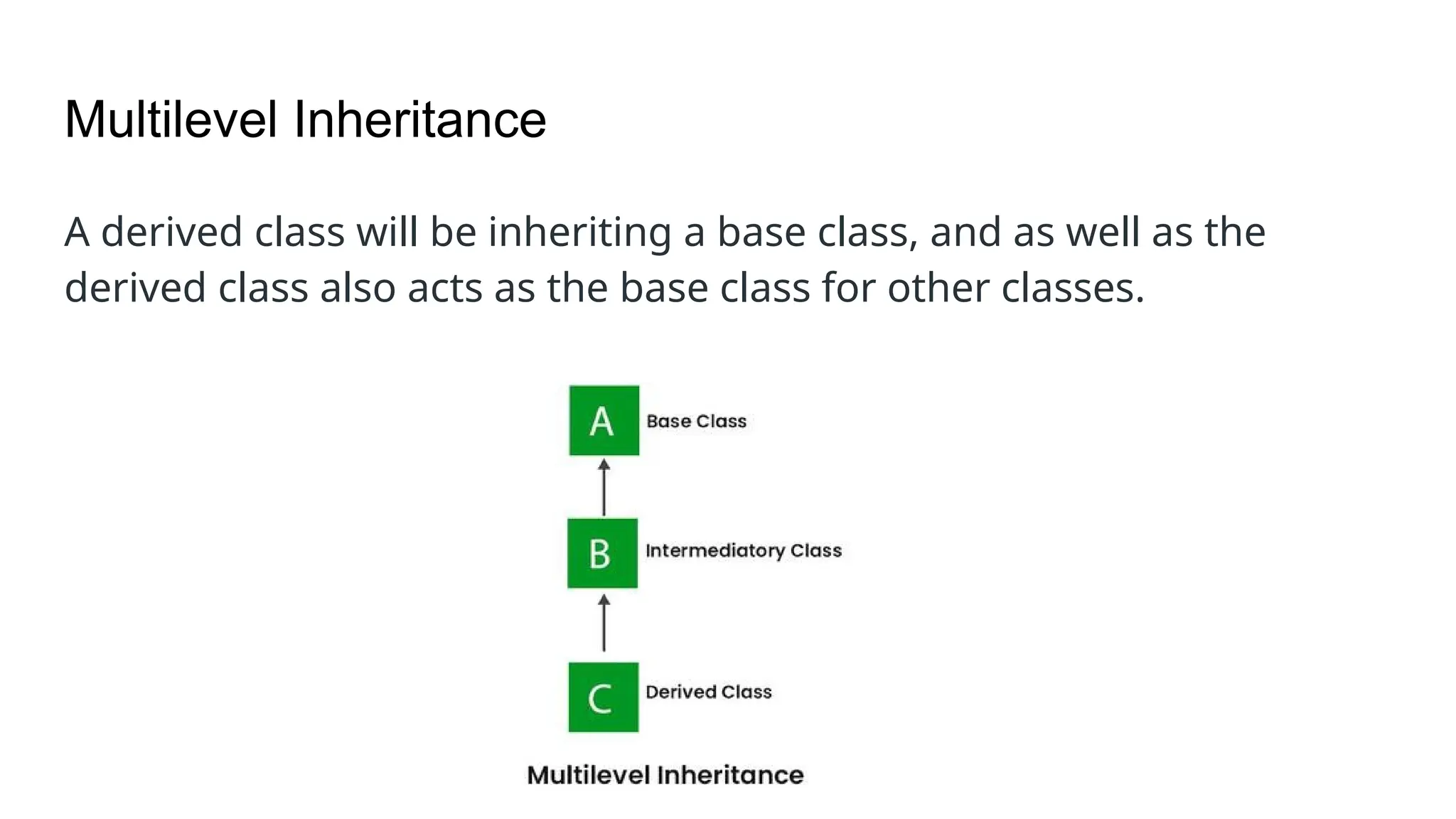
![//multilevel inheritance import java.io.*; import java.lang.*; import java.util.*; class One { public void print_class() { System.out.println("BCA cloud computing"); } } class Two extends One { public void print_sec(){ System.out.println(" Section B"); } } class Three extends Two{ public void print_CA(){ System.out.println(" Class Animator"); } } public class Main { public static void main(String[] args) { Three g = new Three(); g.print_class(); g.print_sec(); g.print_CA(); } }](https://image.slidesharecdn.com/inheritanceinterface1-241129083629-0a785ae8/75/Inheritance-interface-ppt-Inheritance-11-2048.jpg)
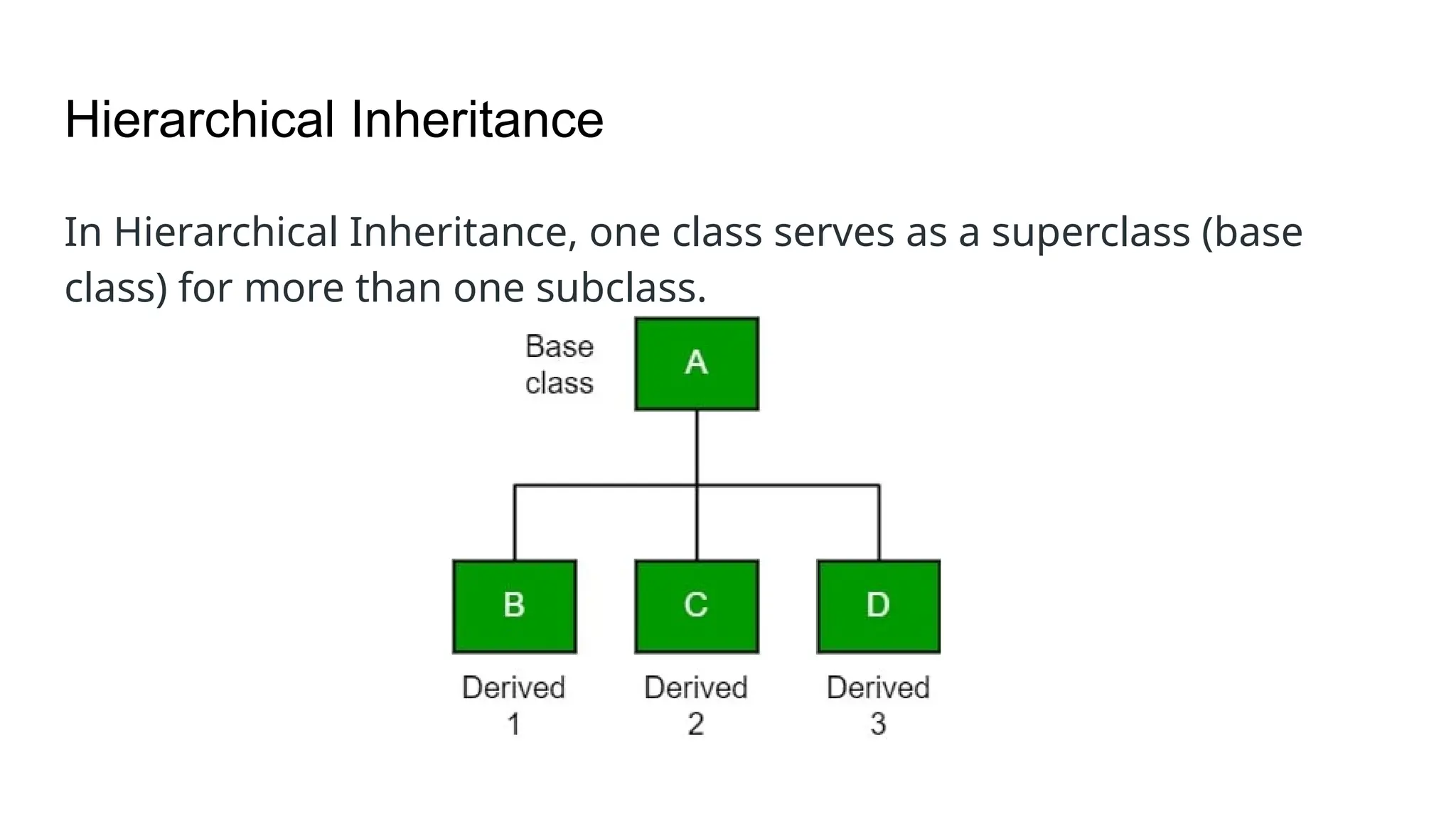
![// Java program to illustrate the hierarchical inheritance class A { public void print_A() { System.out.println("Class A"); }} class B extends A { public void print_B() { System.out.println("Class B"); }} class C extends A { public void print_C() { System.out.println("Class C"); }} class D extends A { public void print_D() { System.out.println("Class D"); } } public class Test { public static void main(String[] args) { B objB = new B(); objB.print_A(); objB.print_B(); C objC = new C(); objC.print_A(); objC.print_C(); D objD = new D(); objD.print_A(); objD.print_D(); } }](https://image.slidesharecdn.com/inheritanceinterface1-241129083629-0a785ae8/75/Inheritance-interface-ppt-Inheritance-13-2048.jpg)
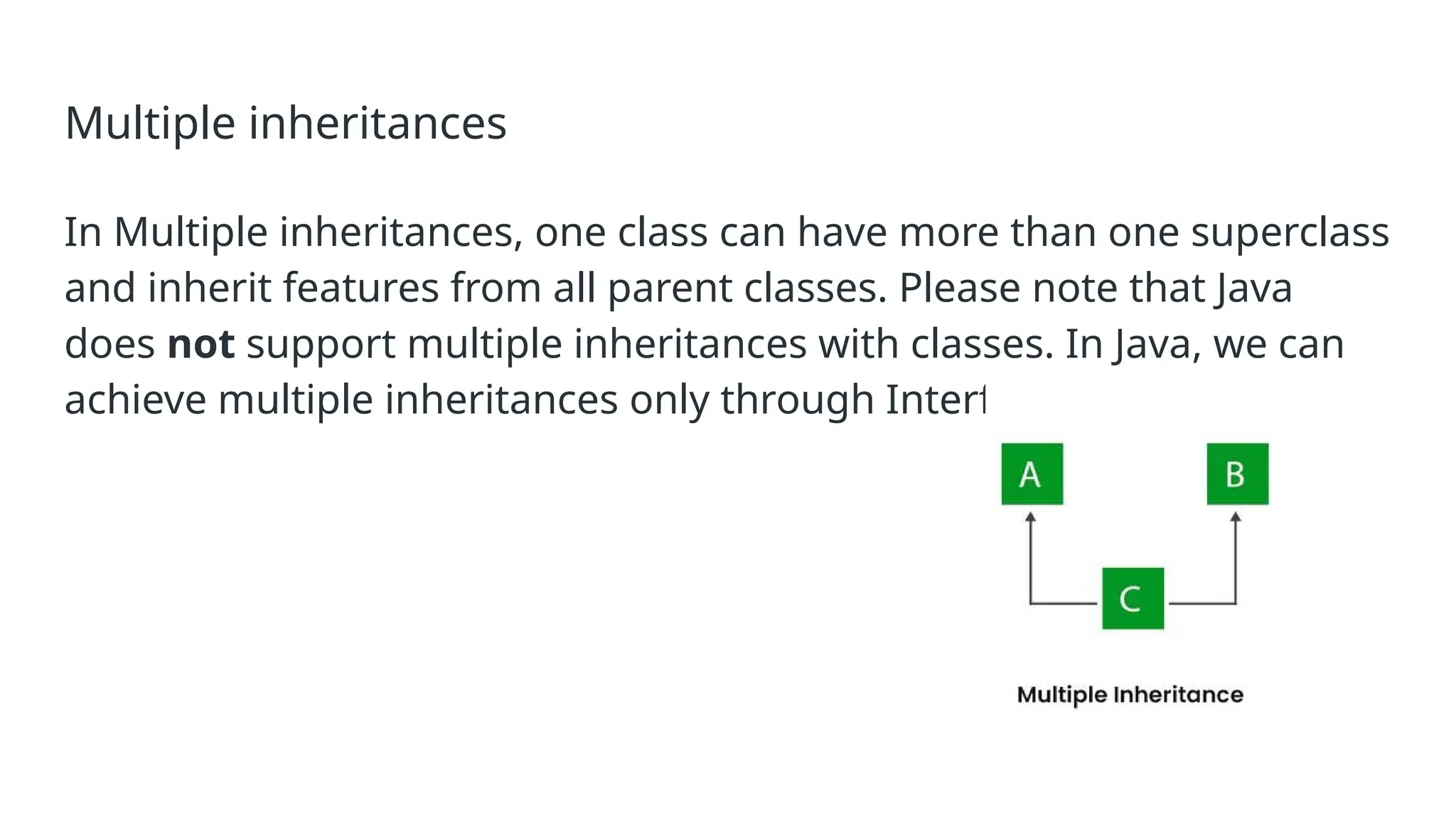
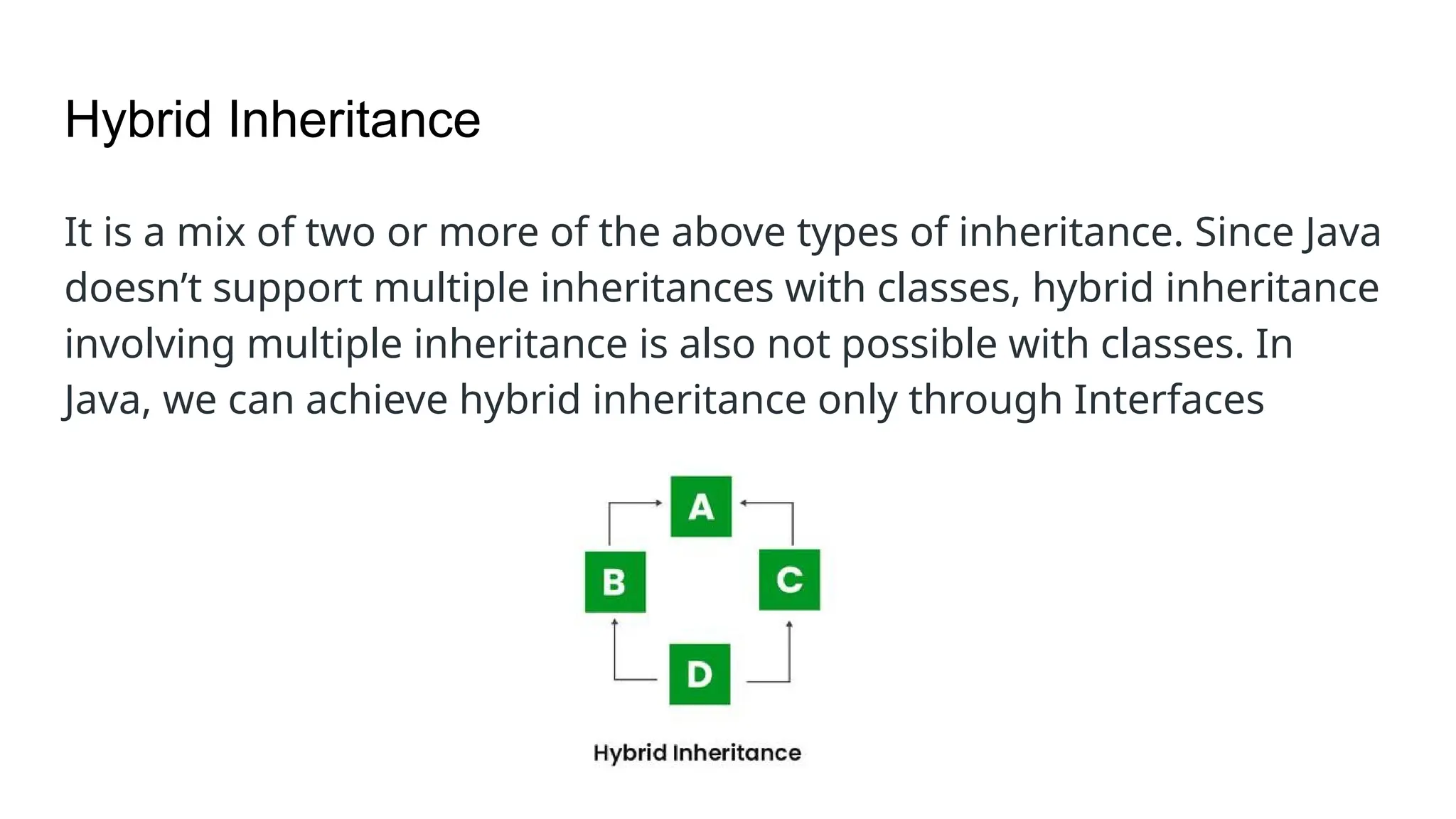


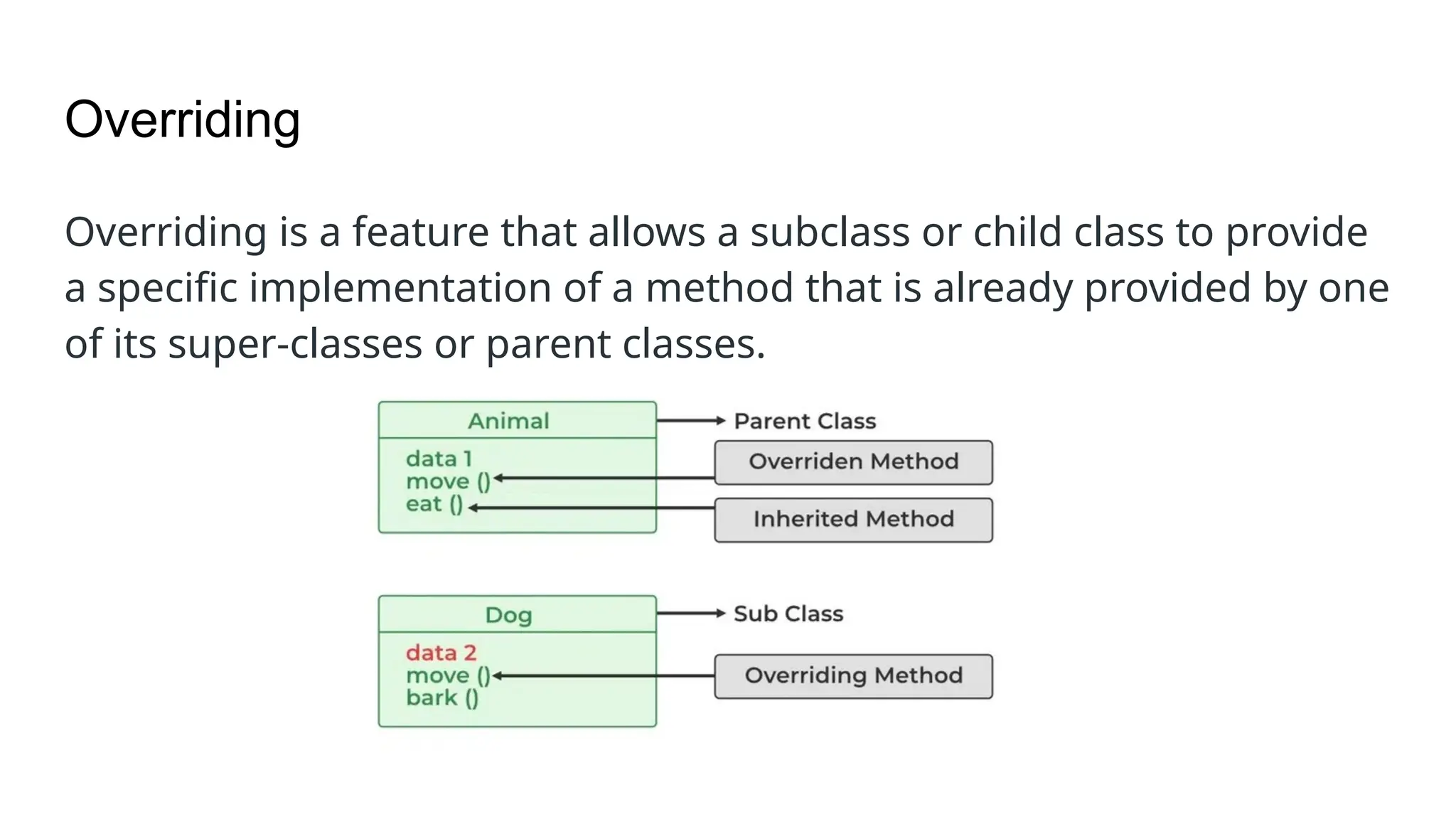
![// Java program to demonstrate // method overriding in java // Base Class class Parent { void show() { System.out.println("Parent's show"); } } // Inherited class class Child extends Parent { // This method overrides show() of Parent @Override void show() { System.out.println("Child's show"); } } // Driver class class Main { public static void main(String[] args) { Parent obj1 = new Parent(); obj1.show(); Parent obj2 = new Child(); obj2.show(); } }](https://image.slidesharecdn.com/inheritanceinterface1-241129083629-0a785ae8/75/Inheritance-interface-ppt-Inheritance-19-2048.jpg)
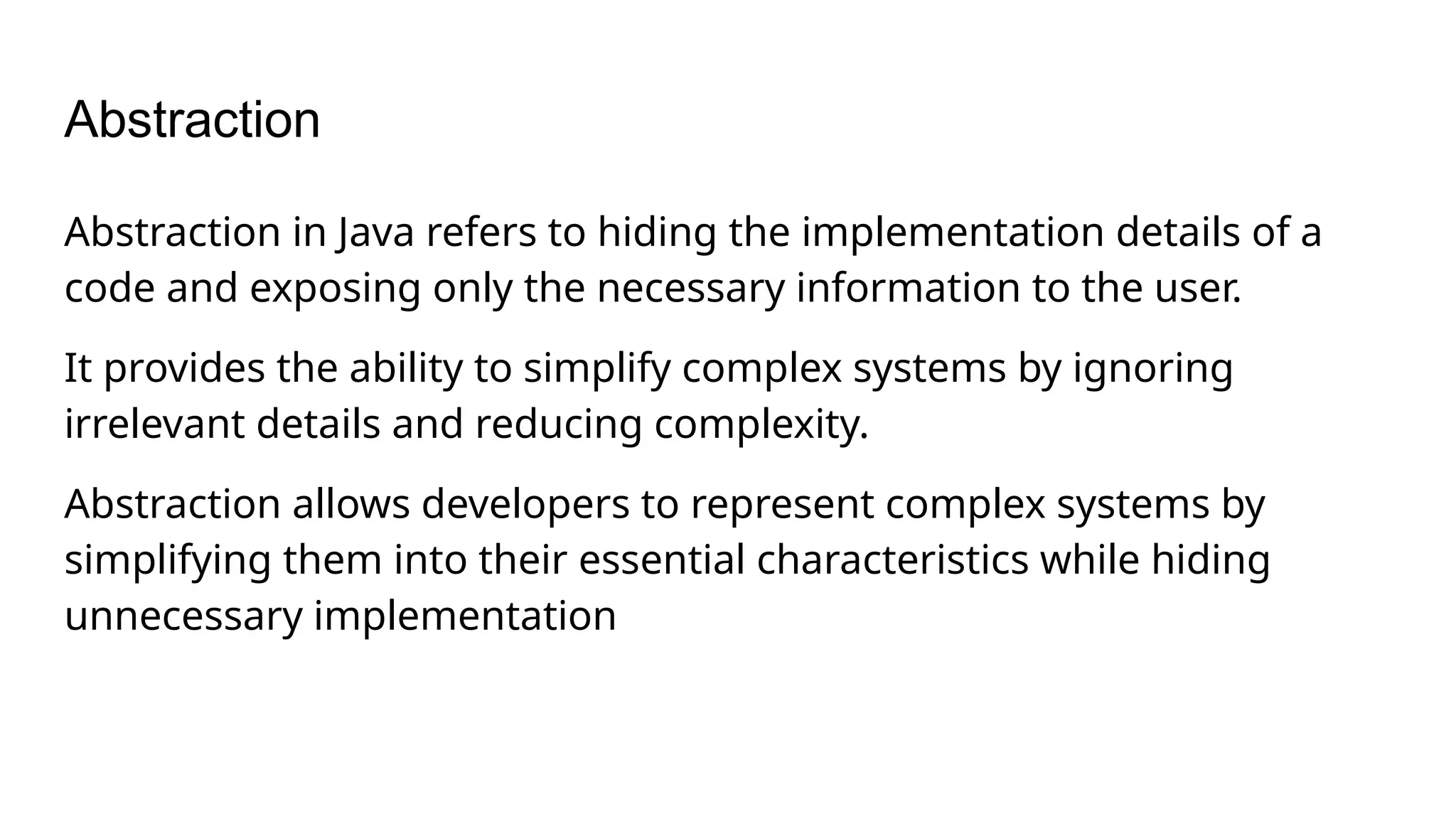
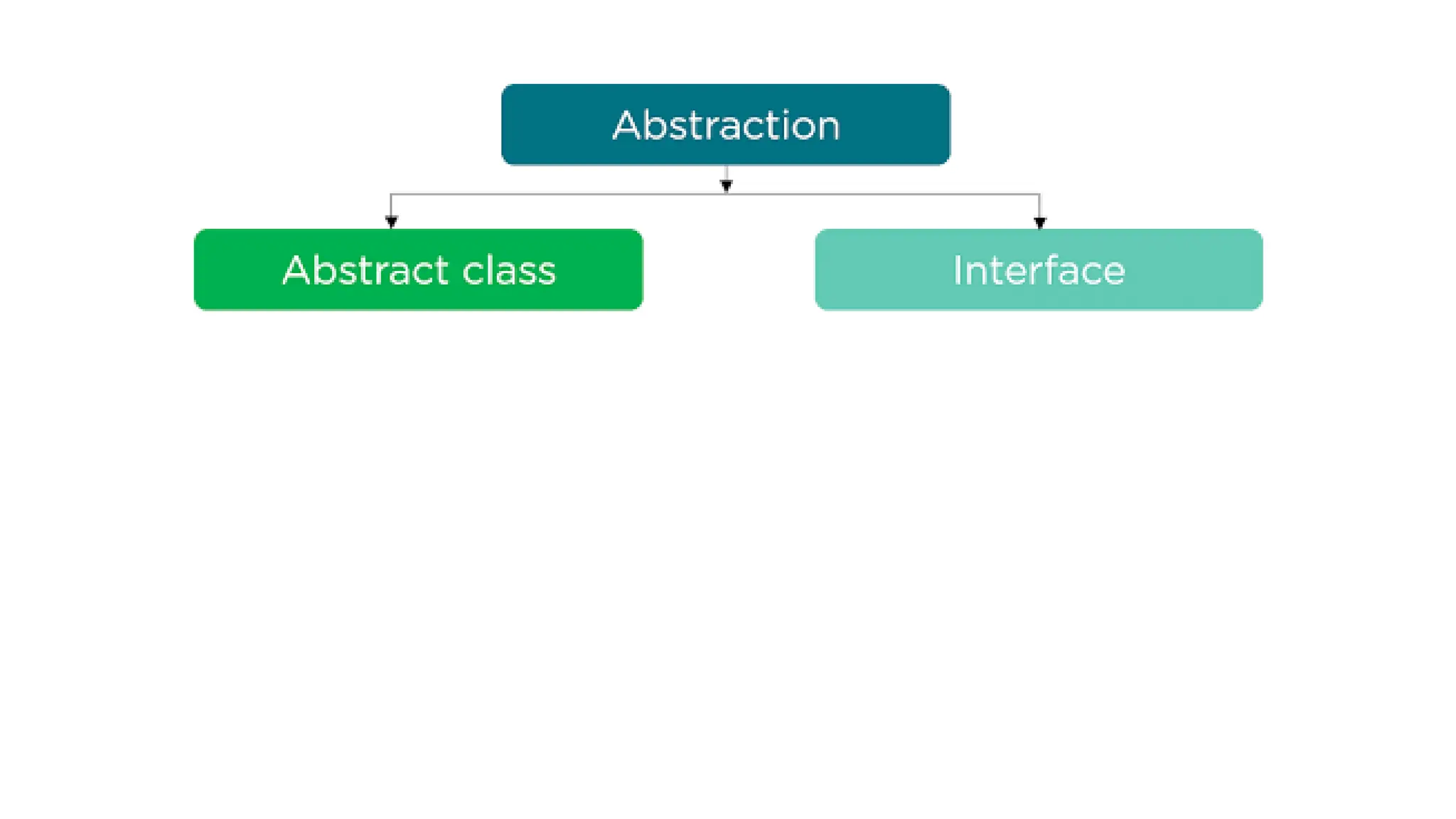
![Abstract class example 1. abstract class Bike{ 2. abstract void run(); 3. } 4. class Honda extends Bike{ 5. void run(){System.out.println("running safely");} 6. public static void main(String args[]){ 7. Honda obj = new Honda(); 8. obj.run(); 9. } 10. }](https://image.slidesharecdn.com/inheritanceinterface1-241129083629-0a785ae8/75/Inheritance-interface-ppt-Inheritance-22-2048.jpg)
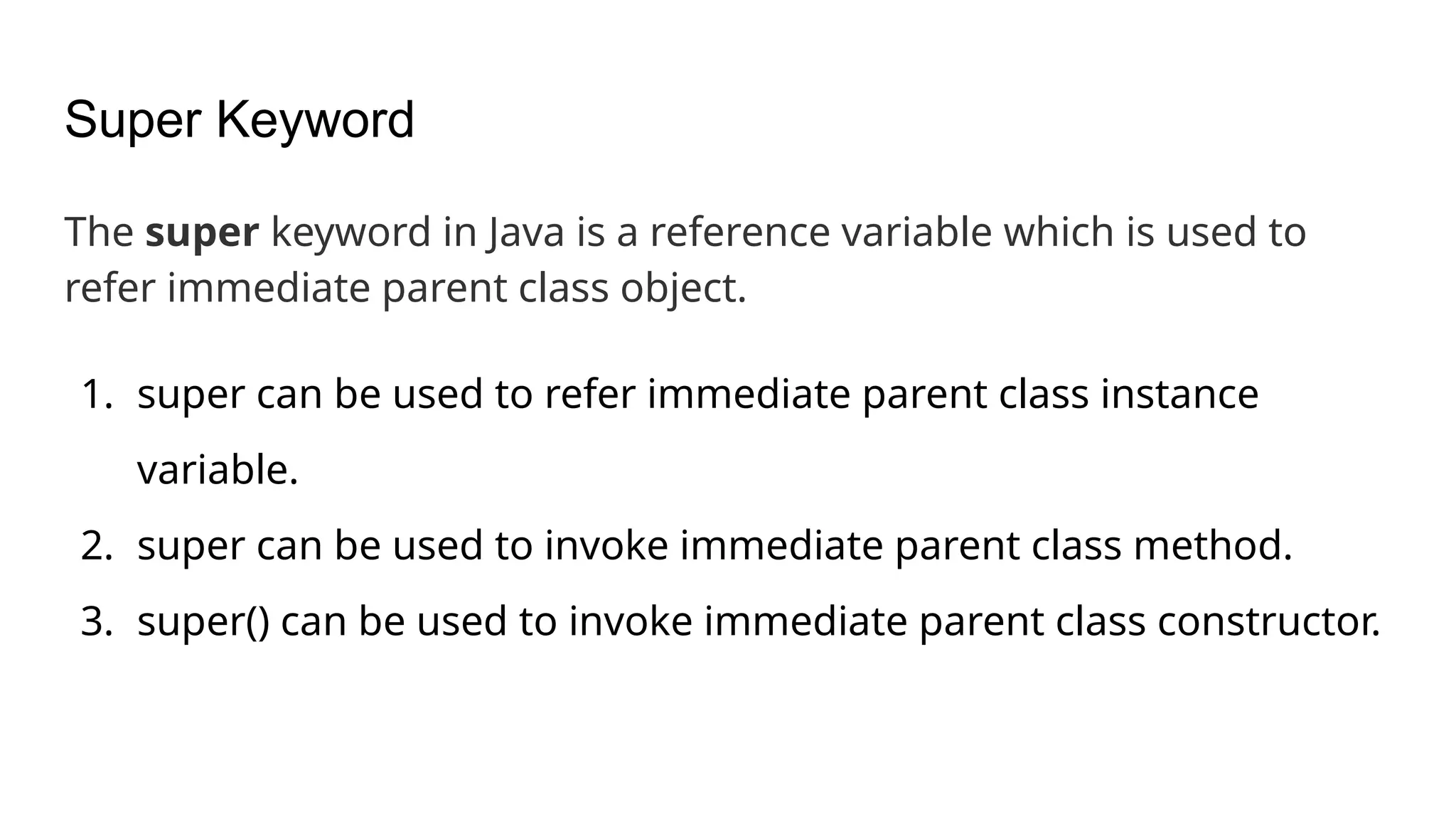
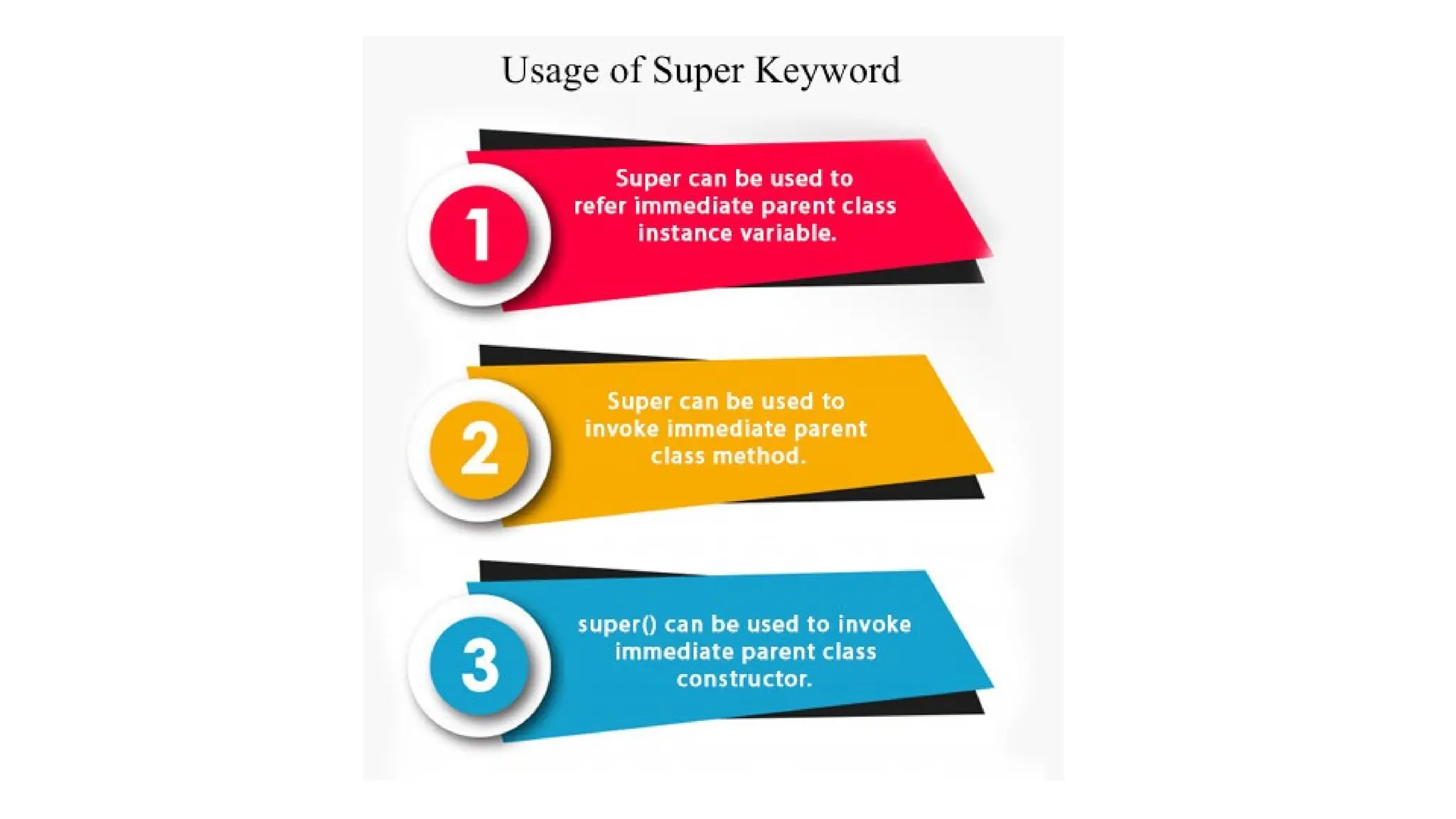
![class Animal{ String color="white"; } class Dog extends Animal{ String color="black"; void printColor(){ System.out.println(color);//prints color of Dog class System.out.println(super.color);//prints color of Animal class } } class Test2{ public static void main(String args[]){ Dog d=new Dog(); d.printColor(); }}](https://image.slidesharecdn.com/inheritanceinterface1-241129083629-0a785ae8/75/Inheritance-interface-ppt-Inheritance-25-2048.jpg)
![class Animal{ void eat(){System.out.println("eating...");} } class Dog extends Animal{ void eat(){System.out.println("eating bread...");} void bark(){System.out.println("barking...");} void work(){ super.eat(); bark(); } } class Test3{ public static void main(String args[]){ Dog d=new Dog(); d.work(); }}](https://image.slidesharecdn.com/inheritanceinterface1-241129083629-0a785ae8/75/Inheritance-interface-ppt-Inheritance-26-2048.jpg)
![class Animal{ Animal(){System.out.println("animal is created");} } class Dog extends Animal{ Dog(){ super(); System.out.println("dog is created"); } } class Test4{ public static void main(String args[]){ Dog d=new Dog(); }}](https://image.slidesharecdn.com/inheritanceinterface1-241129083629-0a785ae8/75/Inheritance-interface-ppt-Inheritance-27-2048.jpg)
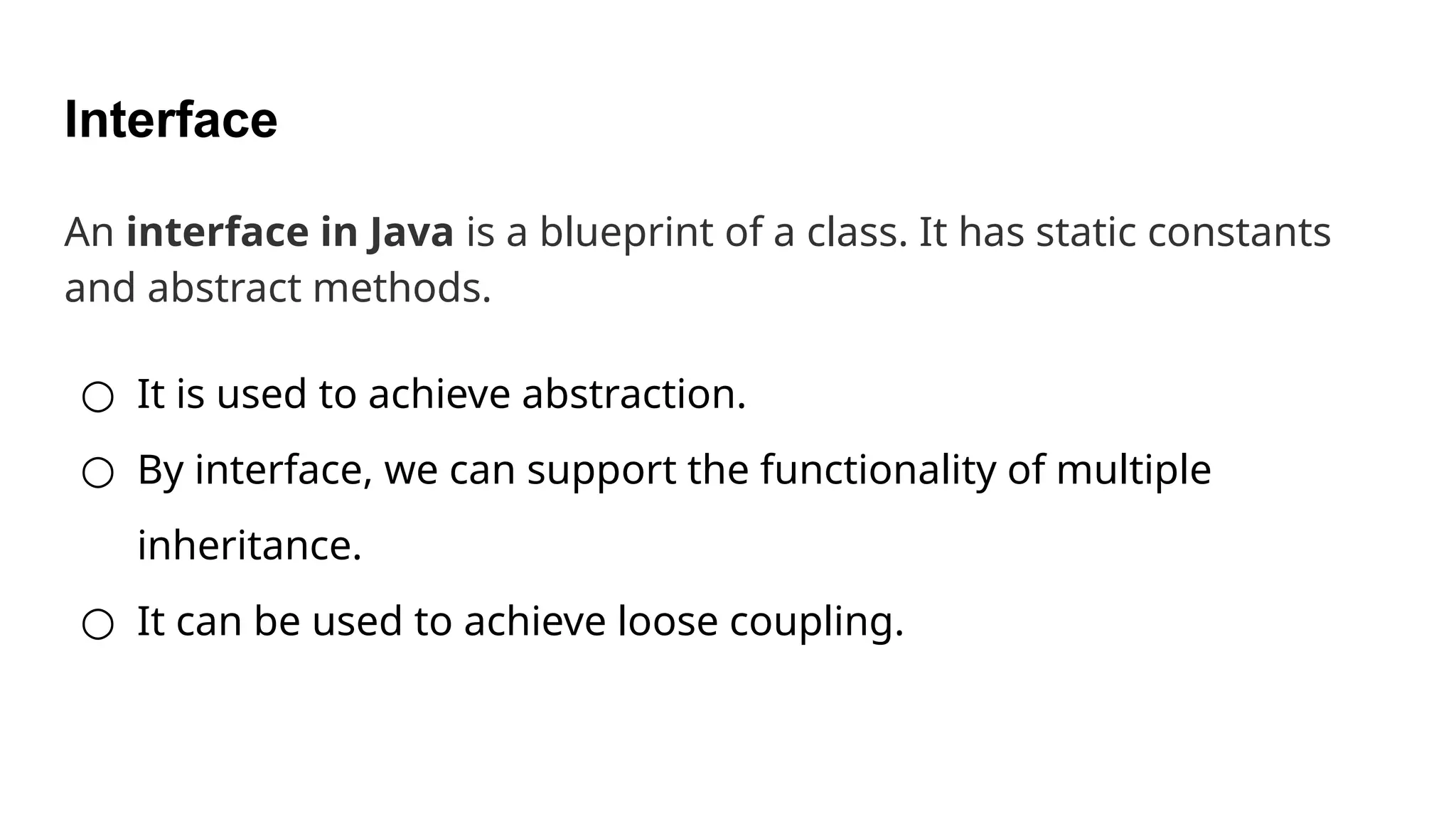
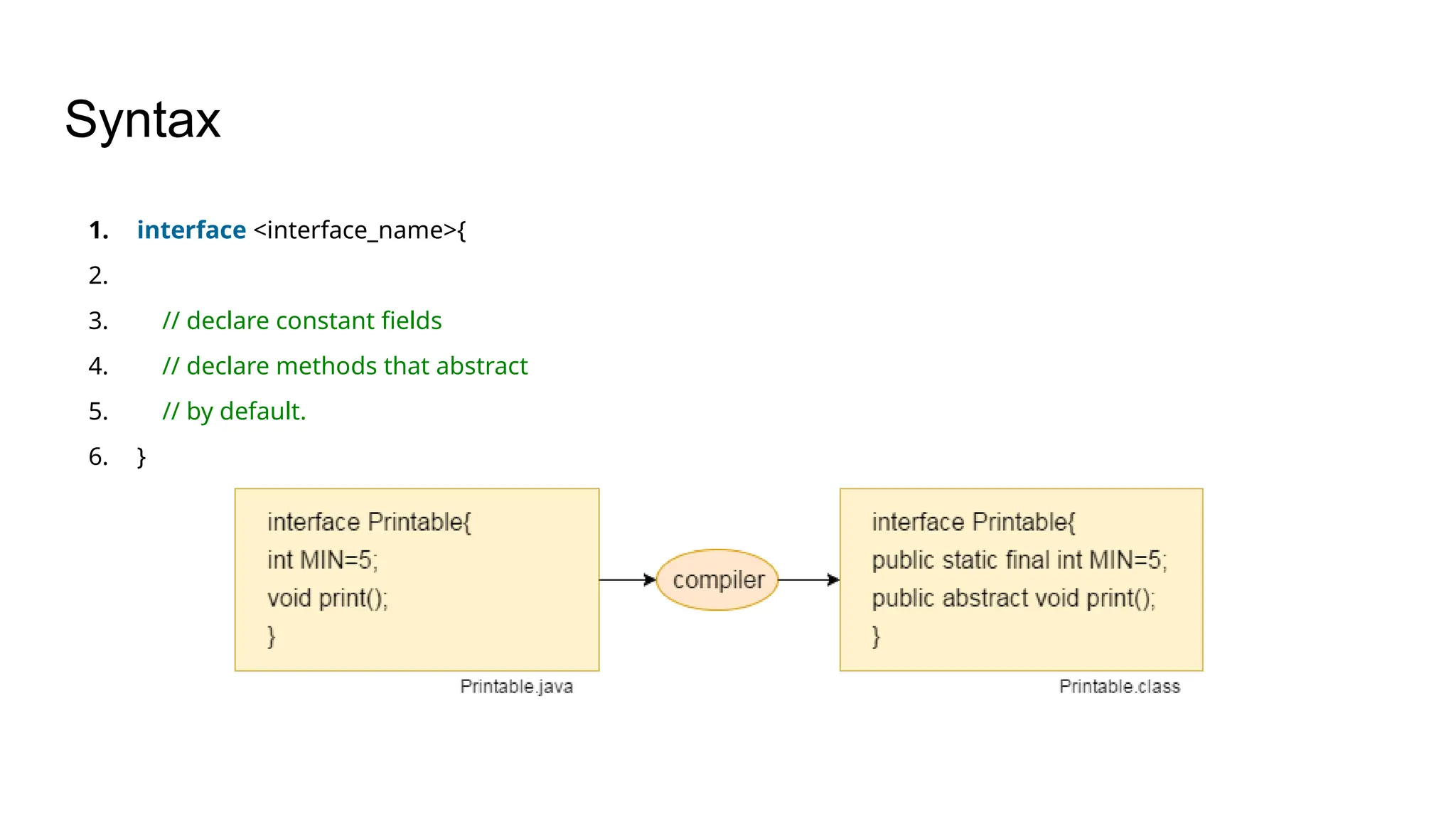
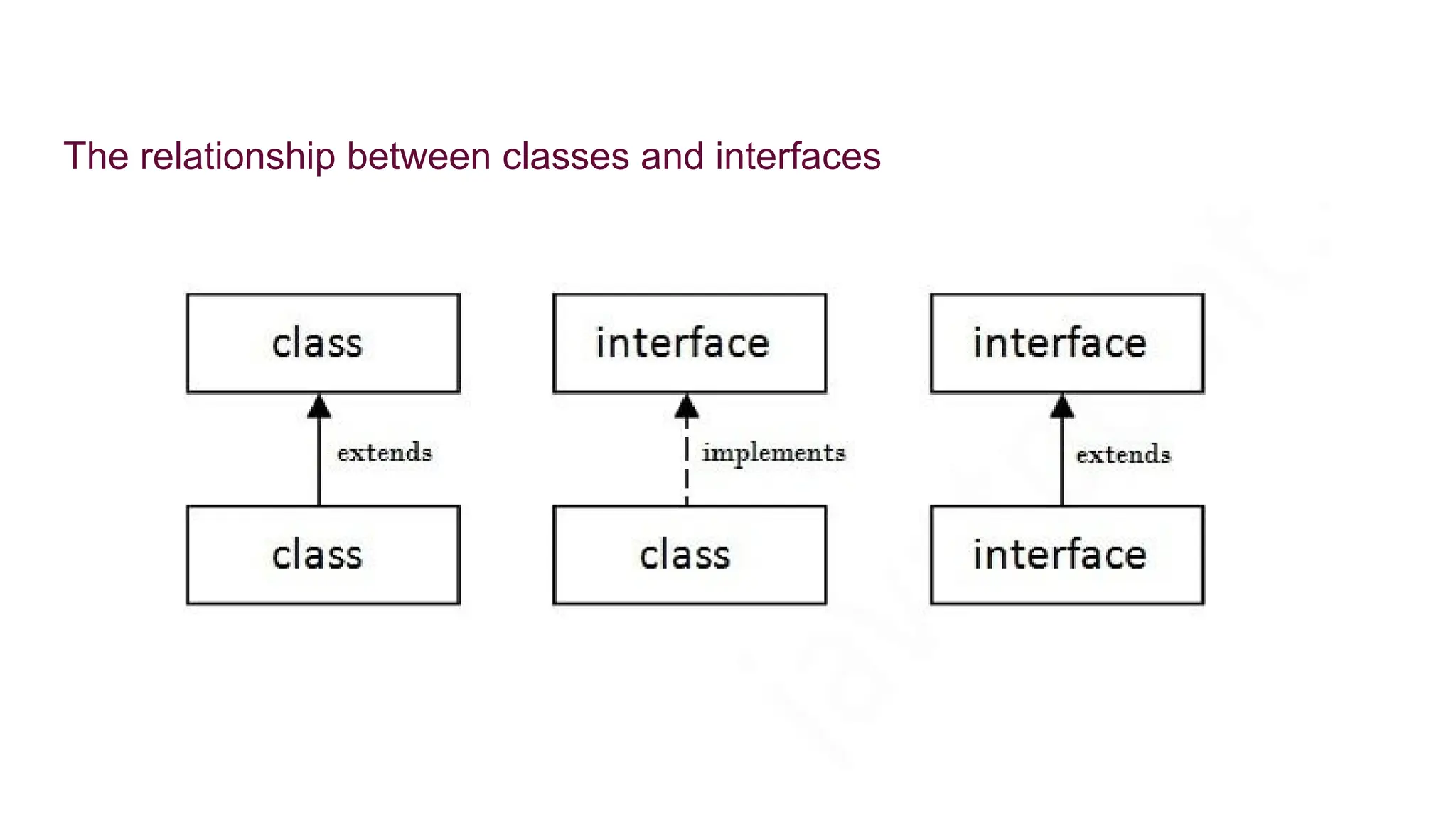
![1. interface printable{ 2. void print(); 3. } 4. class A6 implements printable{ 5. public void print(){System.out.println("Hello");} 6. 7. public static void main(String args[]){ 8. A6 obj = new A6(); 9. obj.print(); 10. } 11.}](https://image.slidesharecdn.com/inheritanceinterface1-241129083629-0a785ae8/75/Inheritance-interface-ppt-Inheritance-31-2048.jpg)
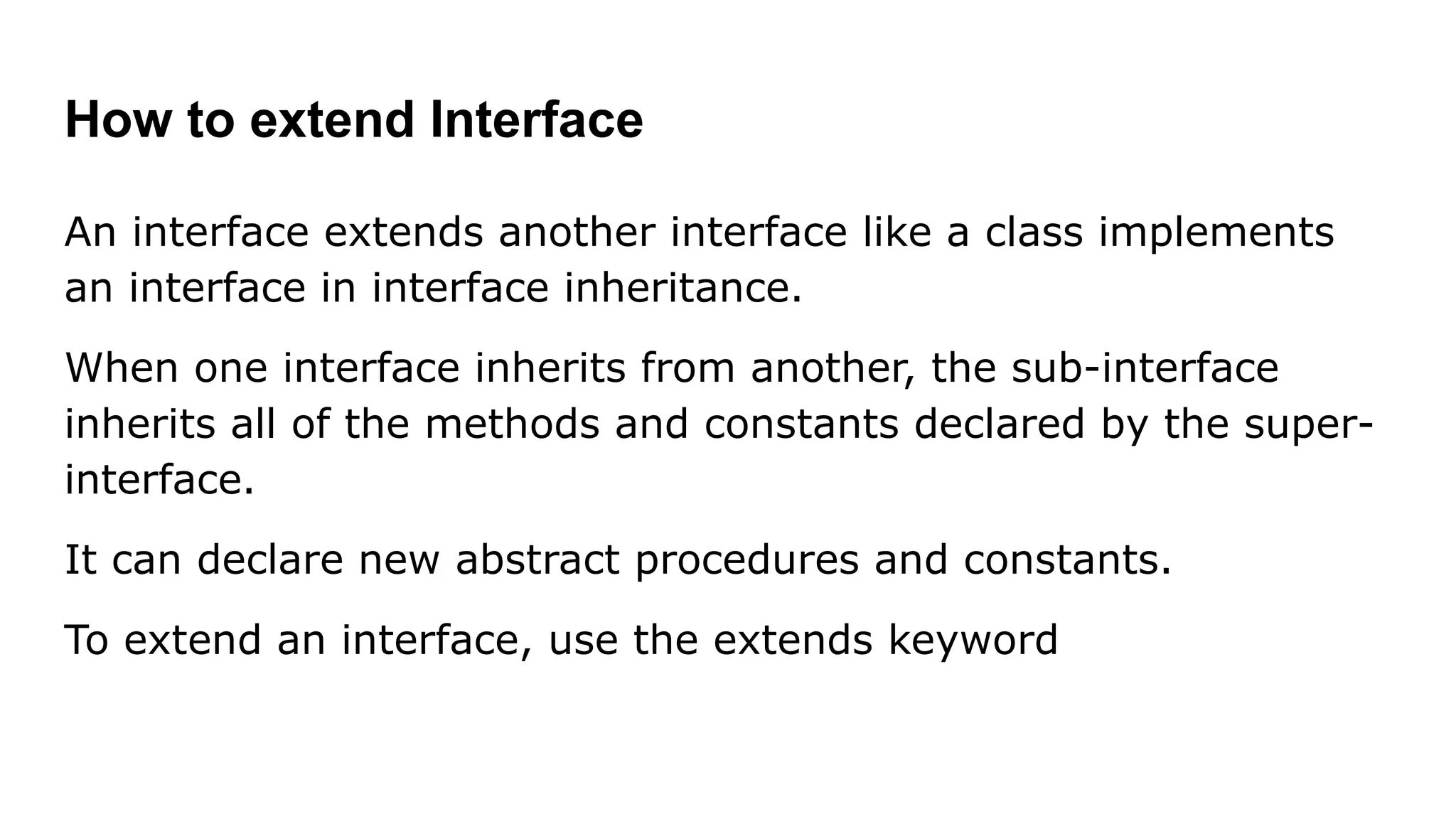
![interface A { void funcA(); } interface B extends A { void funcB(); } class C implements B { public void funcA() { System.out.println("This is funcA"); } public void funcB() { System.out.println("This is funcB"); } } public class Demo5 { public static void main(String args[]) { C obj = new C(); obj.funcA(); obj.funcB(); } }](https://image.slidesharecdn.com/inheritanceinterface1-241129083629-0a785ae8/75/Inheritance-interface-ppt-Inheritance-33-2048.jpg)
